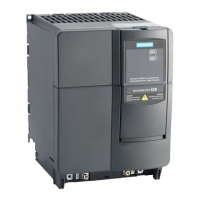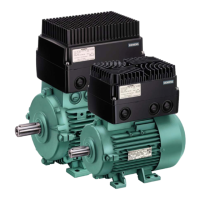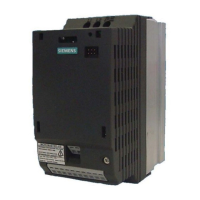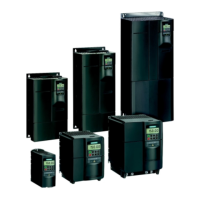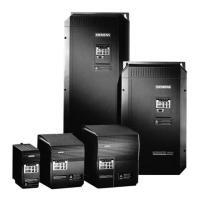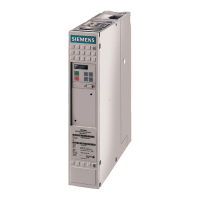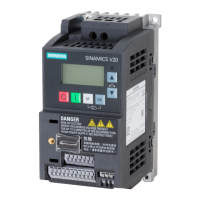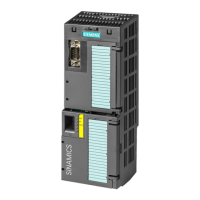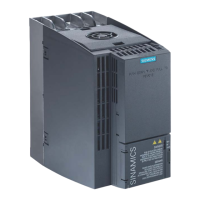Information for the CANopen master Issue 01/05
CANopen Option Module Operating Instructions
70 6SE6400-5BC00-0BP0
4.4 Bus connection
Pin assignment of the bus connection
9-pin SUB-D plug connectors are used to connect the CANopen option module to
the CAN bus.
Table 4-1 Assignment of CANopen sub-D9 connector
Pin
Function Description
1 – Reserved
2 CAN_L CAN_L bus line (dominant low)
3 CAN_GND CAN Ground
4 - Reserved
5 CAN_SHLD Optional CAN Shield
6 GND Optional Ground
7 CAN_H CAN_H bus line (dominant high)
8 - Reserved
7
6
8
9
1
9 CAN_V+
(not MICROMASTER)
Optional CAN external positive supply
CAN-bus cables
The CANopen DRP 301-1 profile recommends cables with the following
properties/features:
Table 4-2 Recommended bus cable according to CiA
Bus cable (1) Bus length [m]
Length-related
resistance [mΩ/m]
Cross-section
[mm2]
Termination
resistance
[Ω]
Baud rate
[kbit/s]
0 ... 40 70 0.25 ... 0.34 124 1000 at 40 m
40 ... 300 < 60 0.34 ... 0.6 150 ... 300 > 500 at 100 m
300 ... 600 < 40 0.5 ... 0.6 150 ... 300 > 100 at 500 m
600 ... 1000 < 26 0.75 ... 0.8 150 ... 300 > 50 at 1 km
(1) Recommended cable AC parameters: 120-Ω impedance and 5-ns/m specific line delay
Bus termination
In order to guarantee perfect operation of the CAN bus, bus terminating resistors
must be provided at both ends of the bus cable (refer to Table 4-2).
Ground connection
Generally, the CAN ground can be connected. However, in completely electrically
isolated CANopen networks the CAN connection does not have to be grounded.
